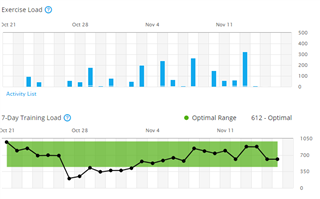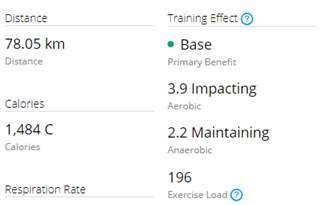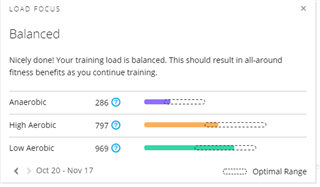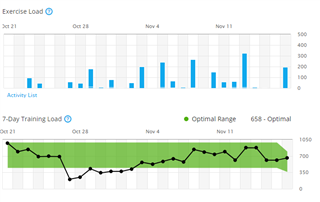So this morning I check my training status & load:


I'm OK at High Aerobic, so during my ride I aimed at filling up the Low Aerobic and Anaerobic bars.
With the Training Effect Gauge as a data field I can see my split between Aerobic and Anaerobic TE as I ride.
But at the Aerobic TE I'm trying to fill up the Low end, not the High.
Is there a data field / any other way that I can see the split between Low and High Aerobic as I ride?
The way things are now I was just eyeballing my heart rate gauge: trying to keep it in the green zone (aerobic 70-80%) or below / trying not to go into orange (threshold 80-90%).
With the Load data screen I could also see my EPOC filling up nicely. 
Got 196 which I assumed would be distributed into the TE bars and raise my totals that I checked before the ride:
Anaerobic = 332. High Aerobic = 1249. Low Aerobic = 808.
But after my ride things looked like this:

Even though I had a training load of 196 with a 2.2 Anaerobic component, my Anaerobic score dropped from 332 to 286.
Even though I had a 3.9 Aerobic component, my High Aerobic dropped from 1249 to 797.
Only my Low Aerobic score increased: from 809 to 969.
Does anybody have any idea of what's going on here?



